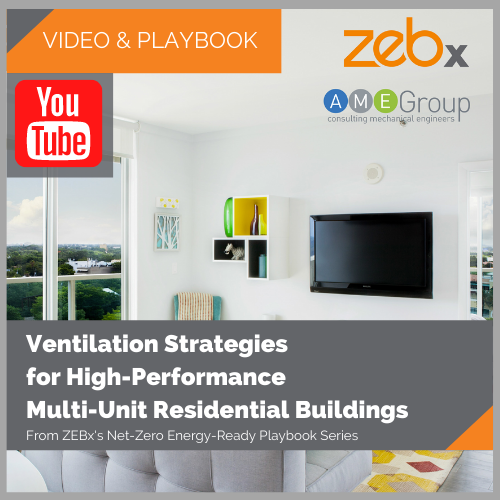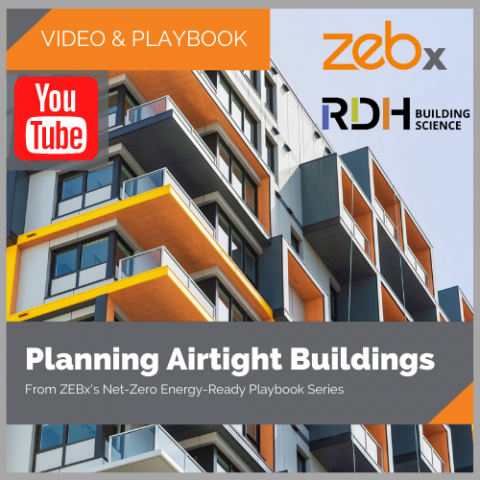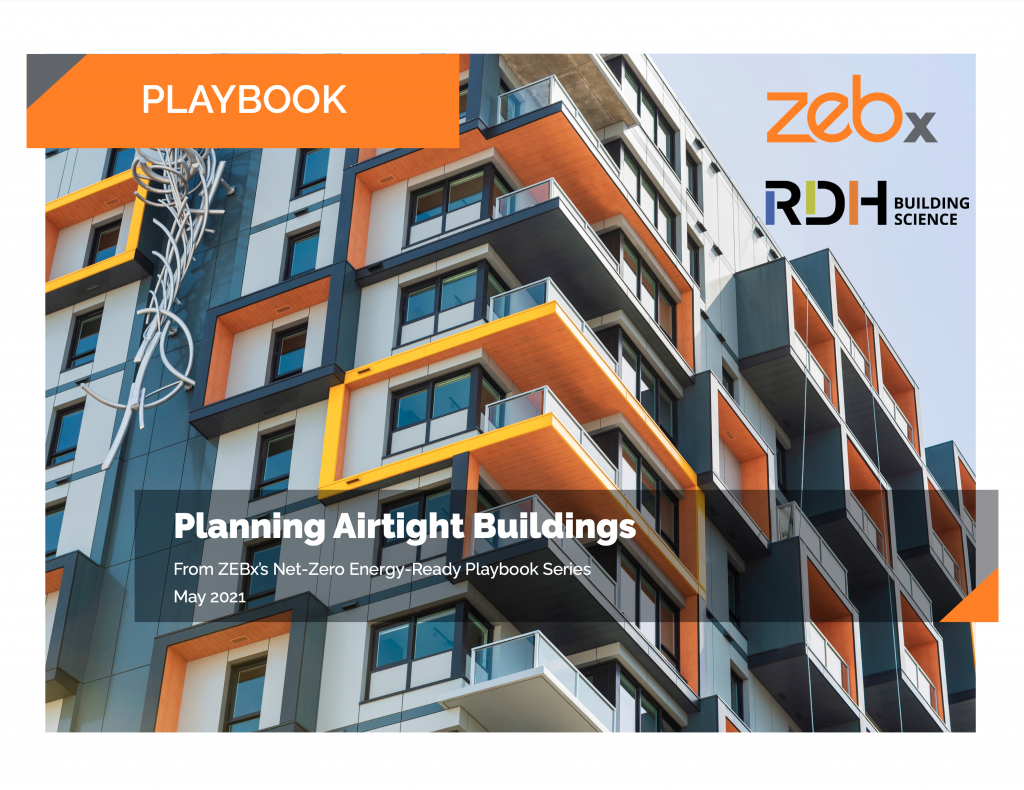
Video & Playbook: Ventilation Strategies for High-Performance Multi-Unit Residential Buildings
April 22, 2021
Mar 2021 Decarb Lunch Podcast: The Peak
May 18, 2021
May 2021: Planning Airtight Buildings
From ZEBx’s Net-Zero Energy-Ready Playbook Series
Why Build Airtight Buildings?
Building airtightness reduces energy consumption by minimizing heat loss via air leakage through the building enclosure. For this reason, many North American building codes have set airtightness targets as part of high-performance building standards. In addition to energy efficiency, airtight buildings experience benefits of improved moisture management, thermal comfort, indoor air quality, and quality assurance.
Less moisture transfer
Air movement is often a significant mechanism for moisture
transfer in building enclosure systems. When warm and relatively
moist air meets a colder surface in a building enclosure assembly it can condense, possibly leading to mould and deterioration. Airtight building enclosures reduce the risk of water vapour transport and condensation within the assembly, improving the durability of the building.
Better thermal comfort
Air leakage into buildings can also be a cause of thermal
discomfort. Airtight buildings can improve occupant comfort by
reducing drafts.
Better indoor environmental quality
Air movement can carry odours, noise, airborne contaminants,
and pests across the building enclosure and between internal
building zones. Airtight building enclosures and internal
compartmentalization help to reduce the unwanted transfer of
these elements, improving the indoor environmental quality for
building occupants.
Improved quality assurance
An additional benefit of airtightness is enhanced quality assurance in the construction of a building. For instance, the air barrier system often provides additional functionality such as water control, so attention to detailing the air barrier system will also benefit water penetration detailing.
View the playbook: Planning Airtight Buildings







